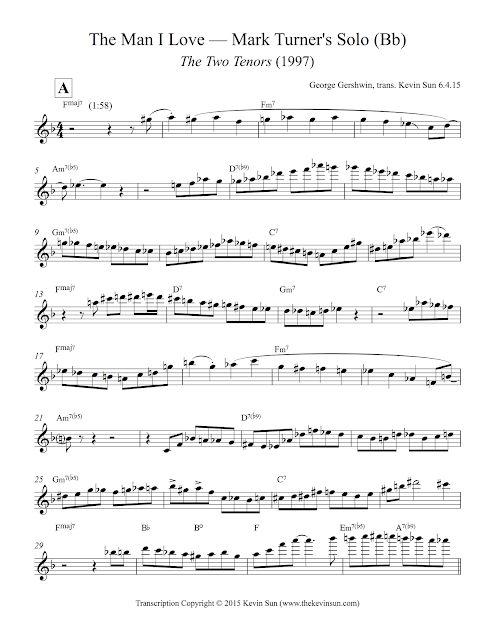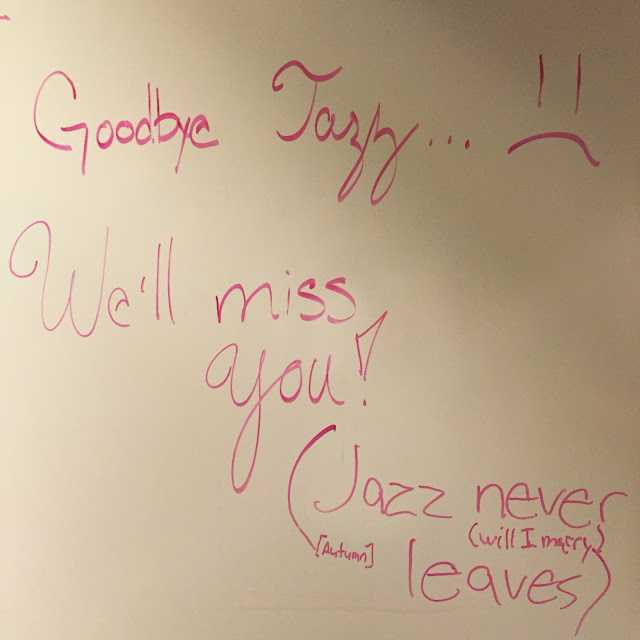Mark Turner on "Along Came Betty" (Two Versions)

Mark Turner in full "jackhammer" at The Jazz Gallery (YouTube screen-capture via Radhika Philip ) Drummer Johnathan Blake leads a powerhouse chordless quartet featuring tenor saxophonists Mark Turner and Chris Potter, with Ben Street on bass. The band has released one album, Gone, But Not Forgotten (Criss Cross, 2014), and most recently performed last weekend at Newport. I caught the band live at the Jazz Standard back in May, but unfortunately missed them when they performed at The Jazz Gallery at the very start of my senior year of college. Radhika Philip , author of the invaluable Being Here , a collection of recent interviews with leading creative improvisors on the New York scene, captured this video from the show, which has since been watched over 25,000, a pretty respectable number of eyeballs for the jazz web. Through the shadowy jazz bootleg network, I managed to get a rendition of "Along Came Betty," whose richly chromatic harmonic scheme is a mor...




